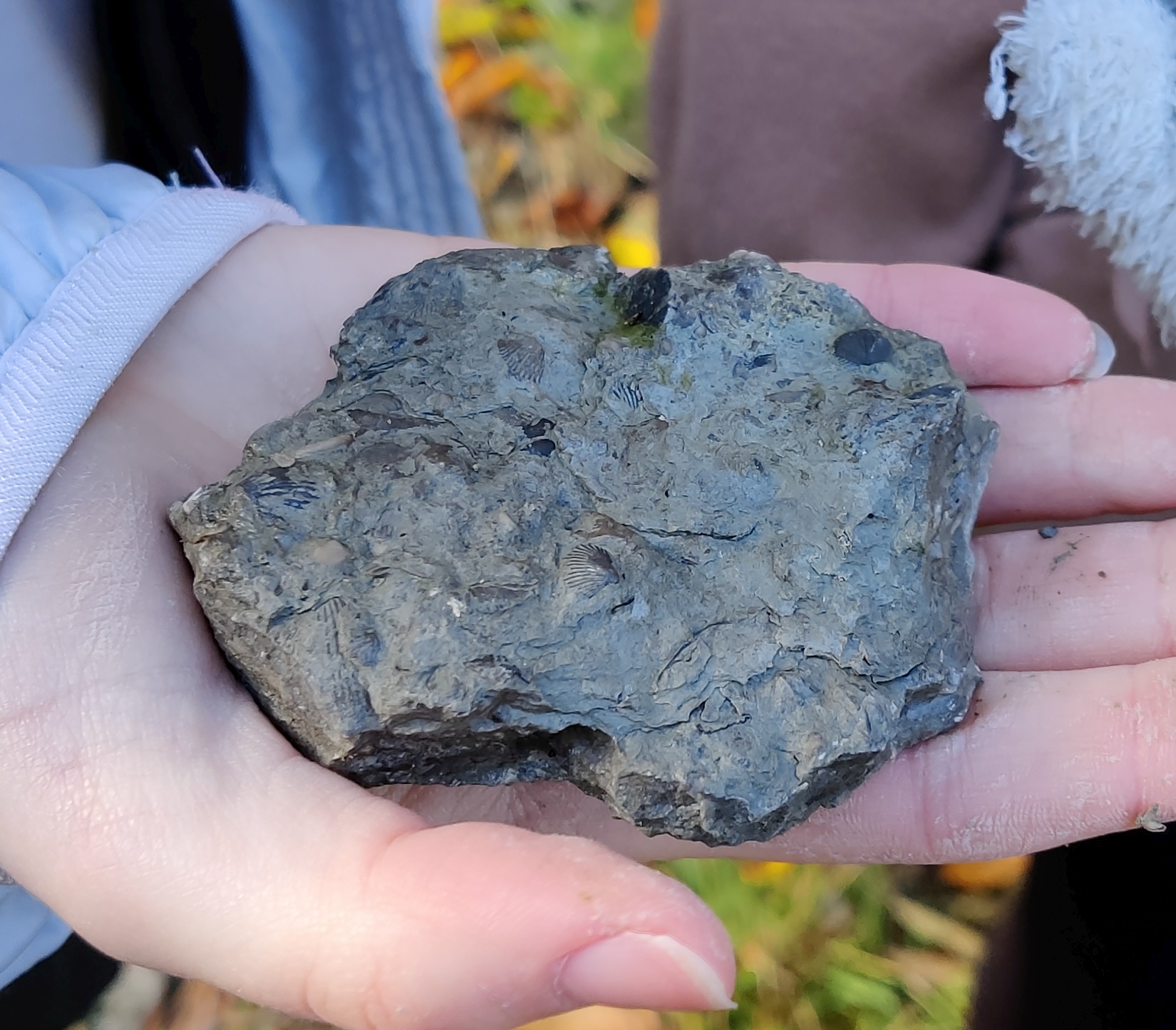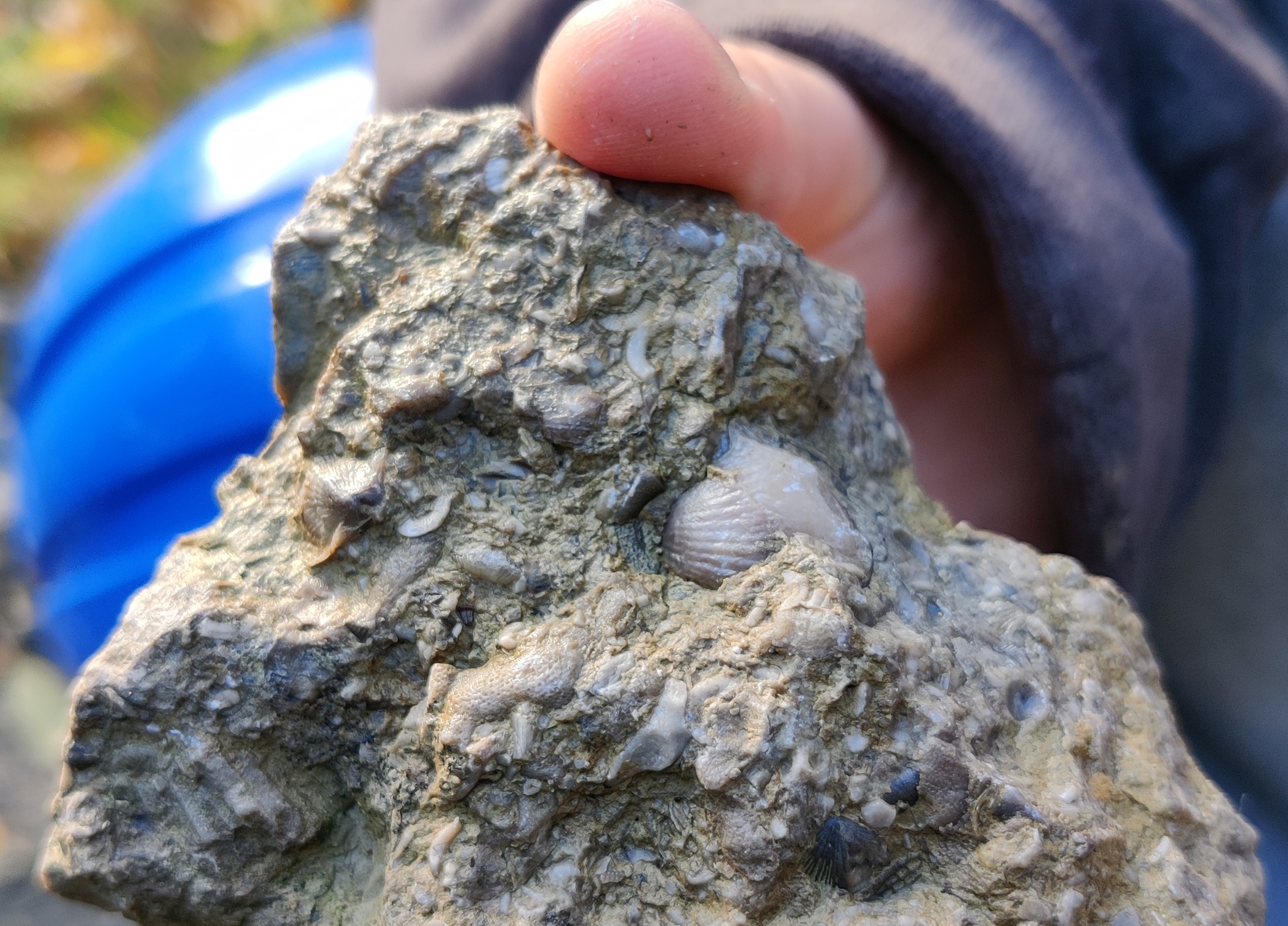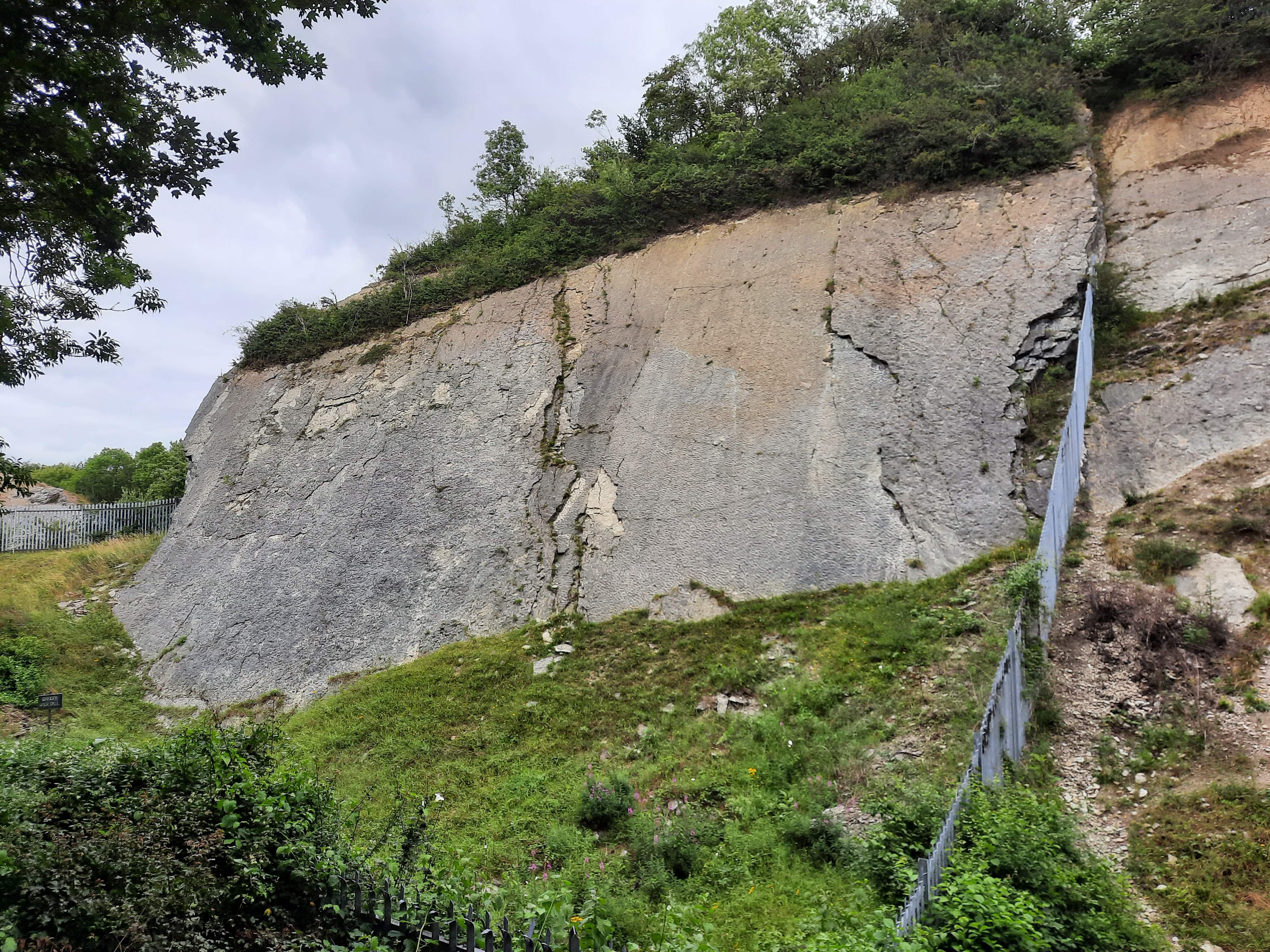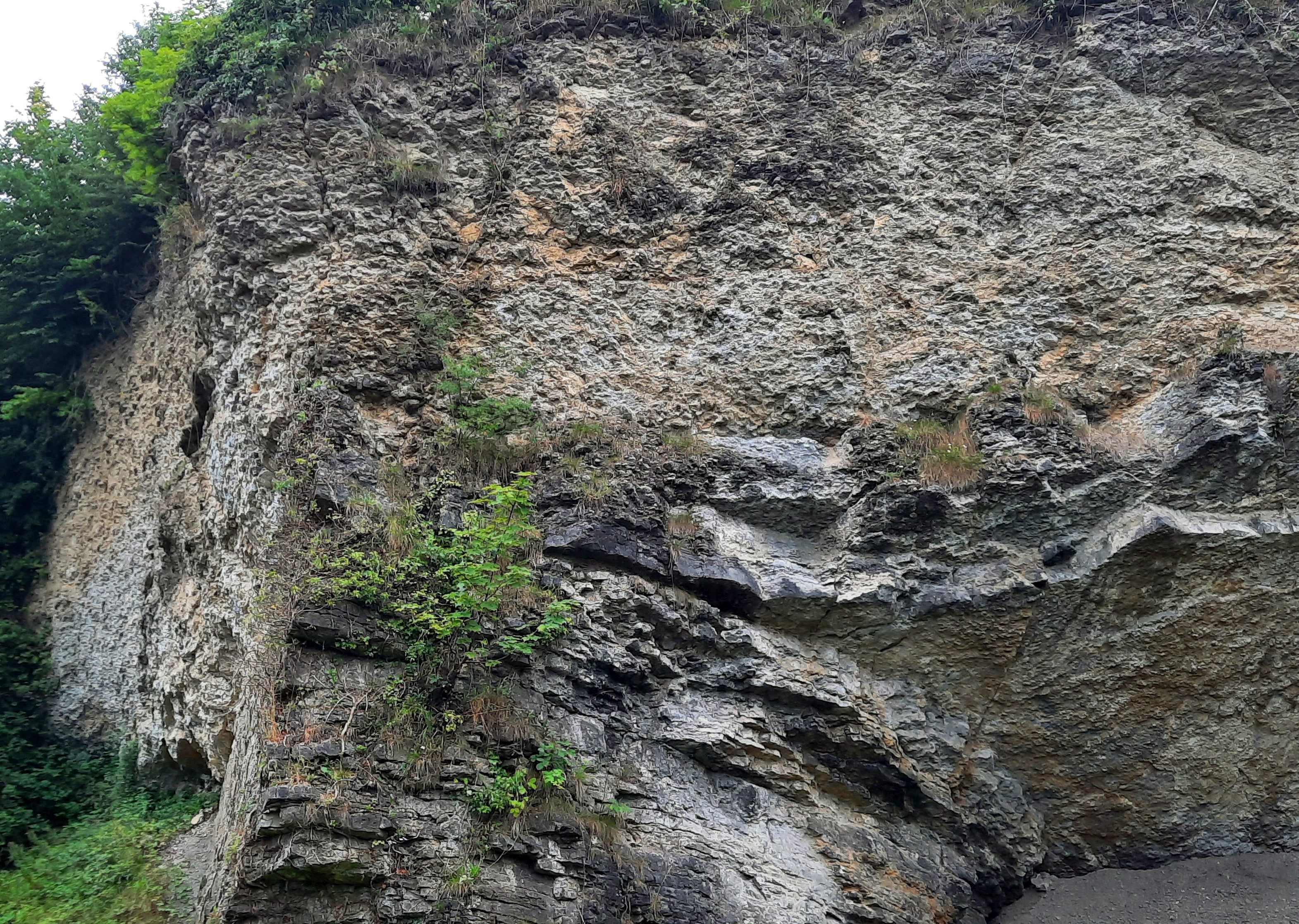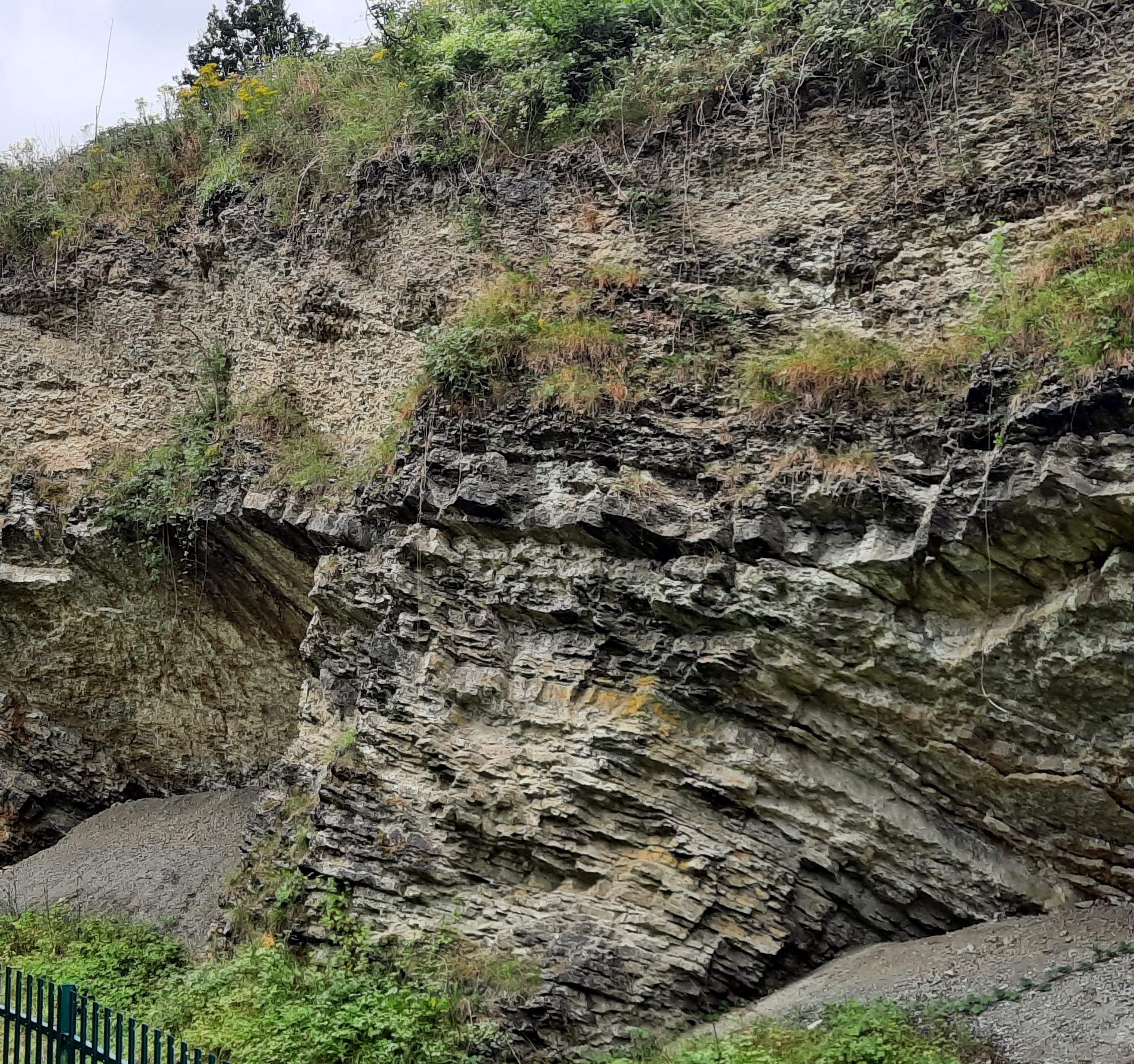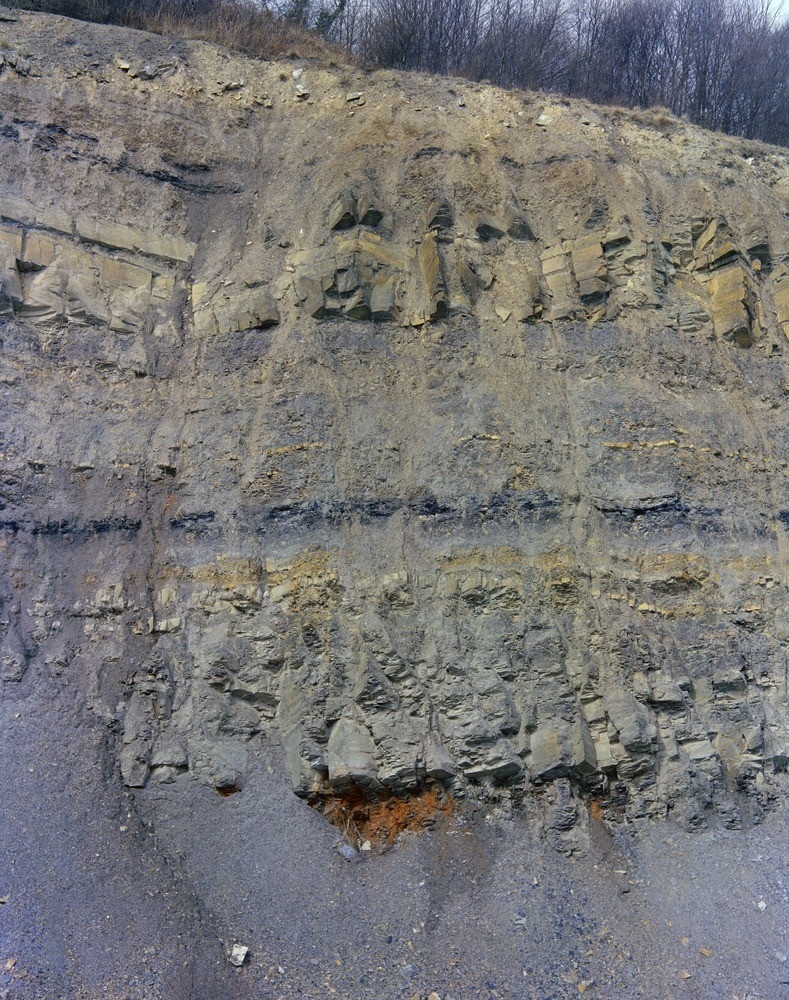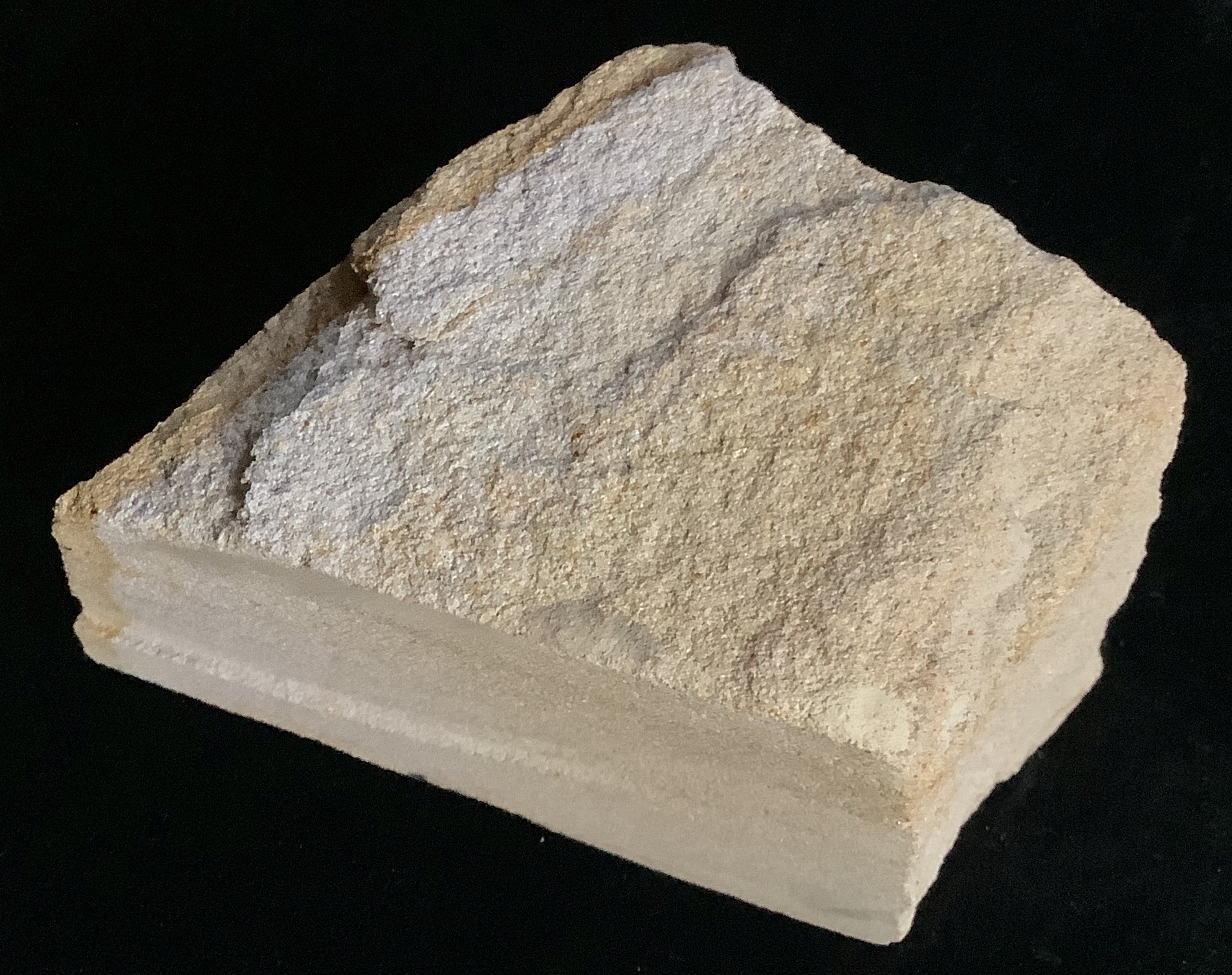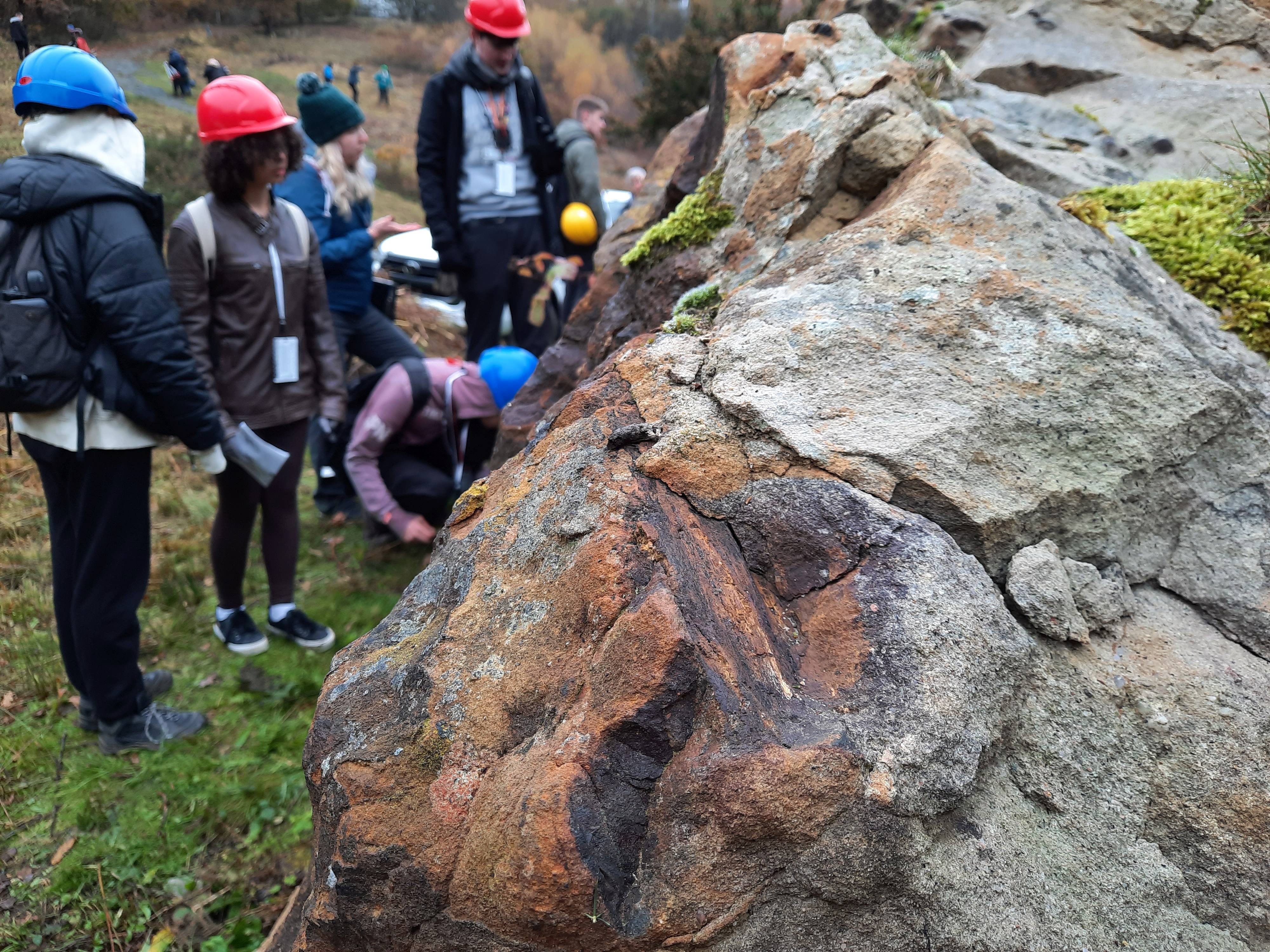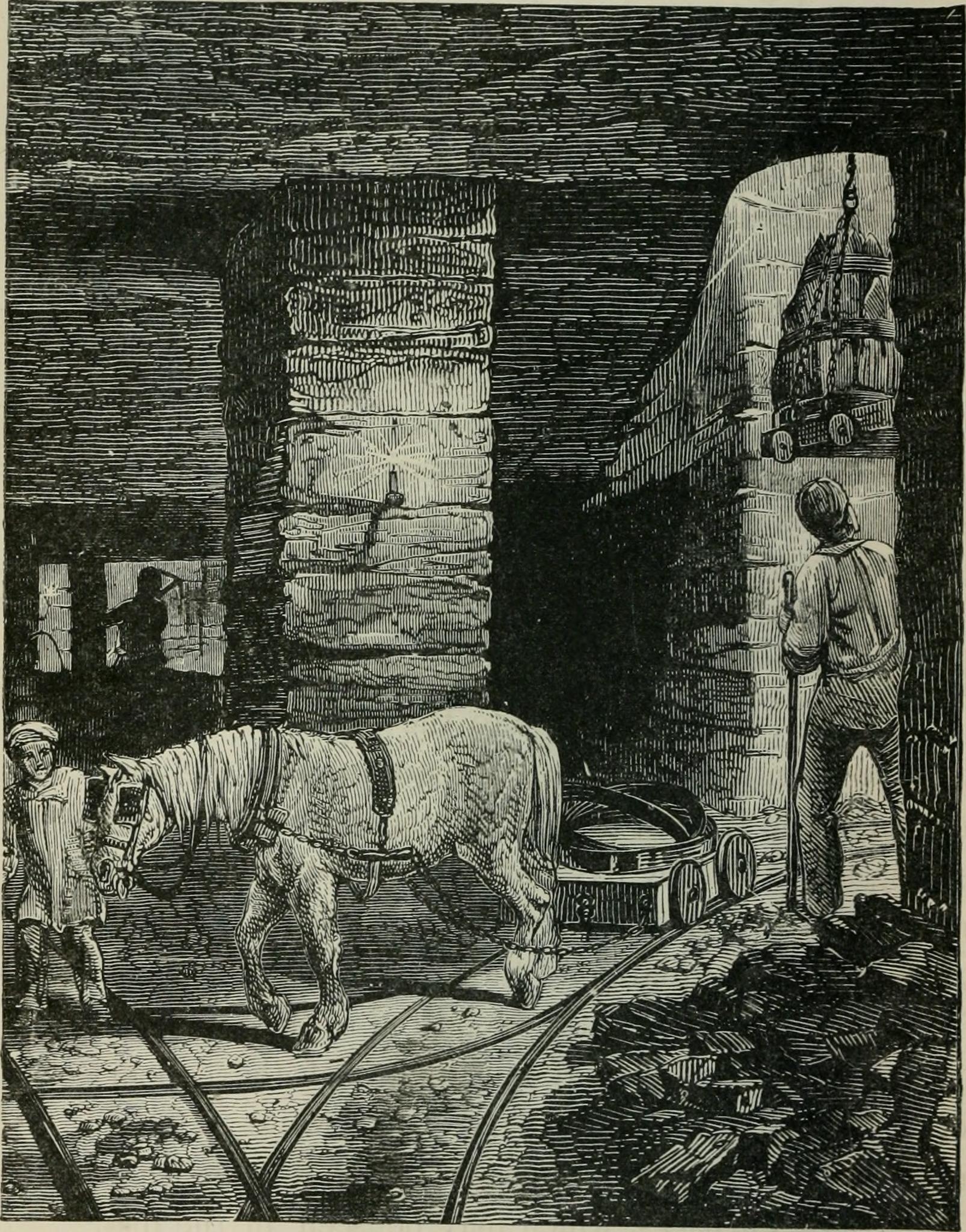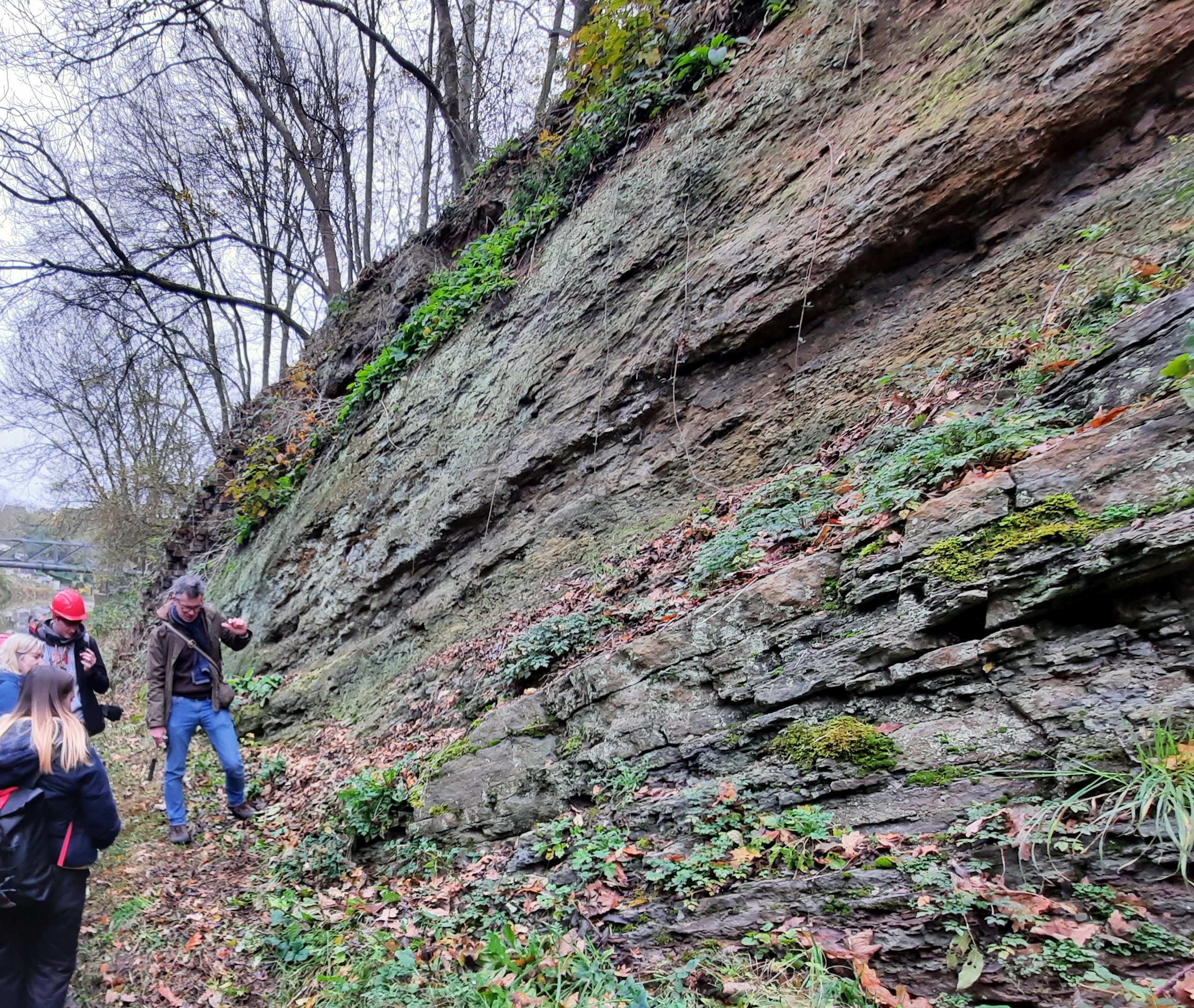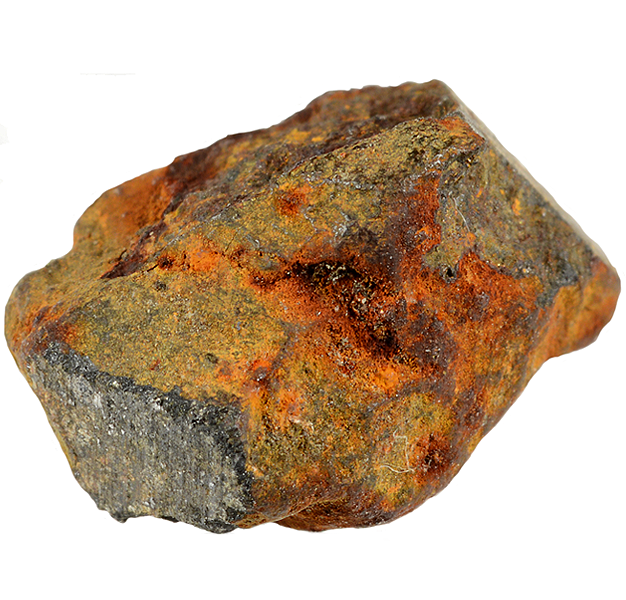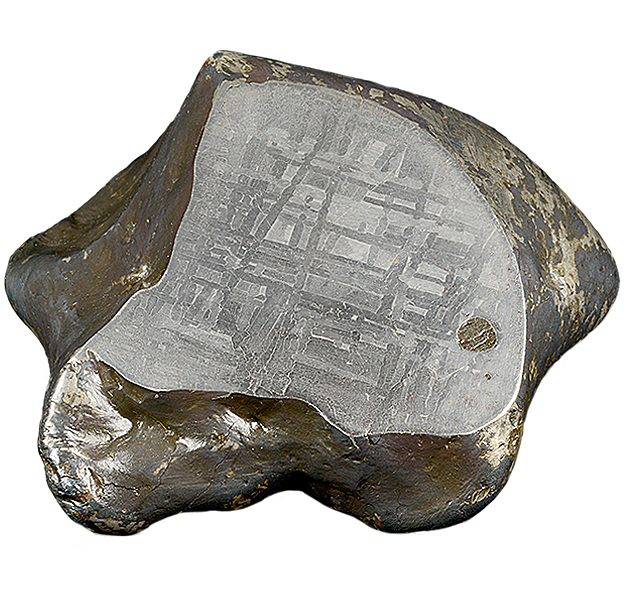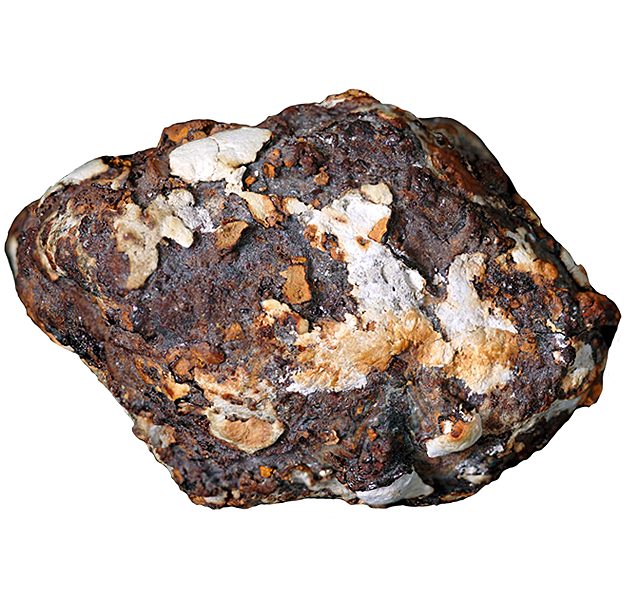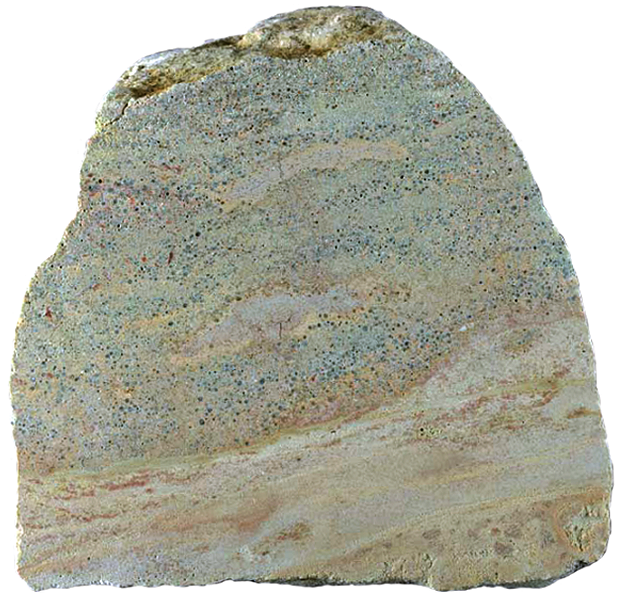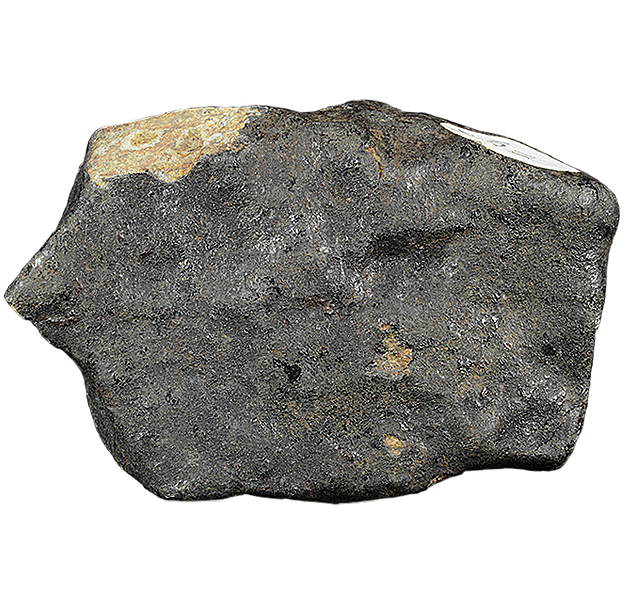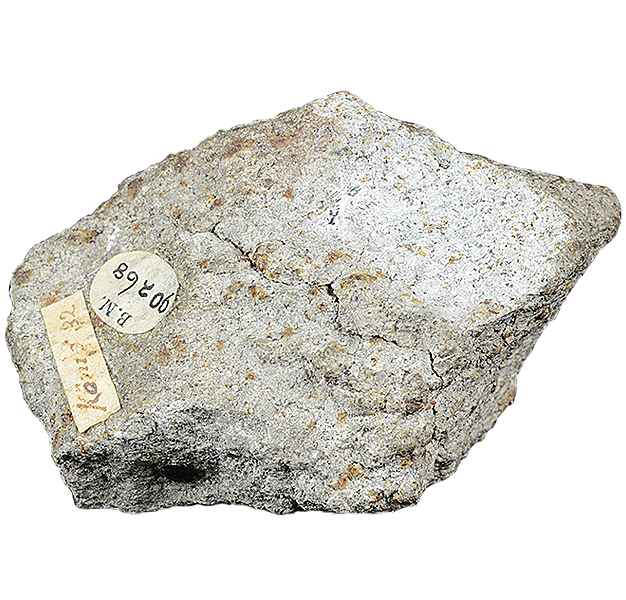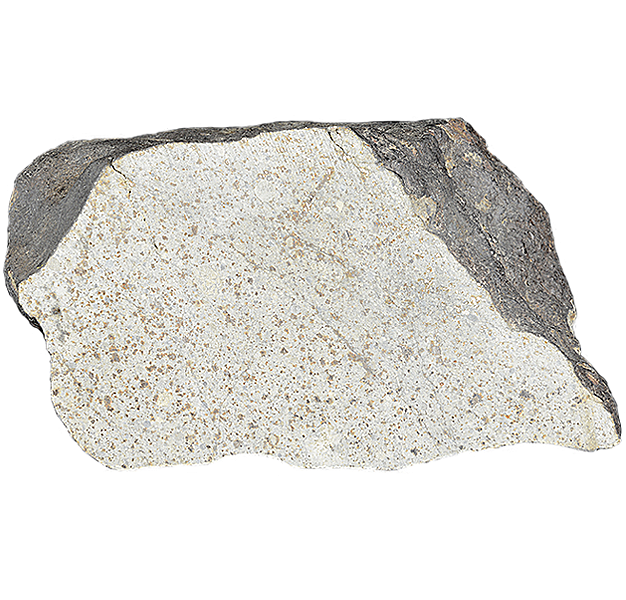Strata 10 Silurian Gornal Grit
Silurian Gornal Grit
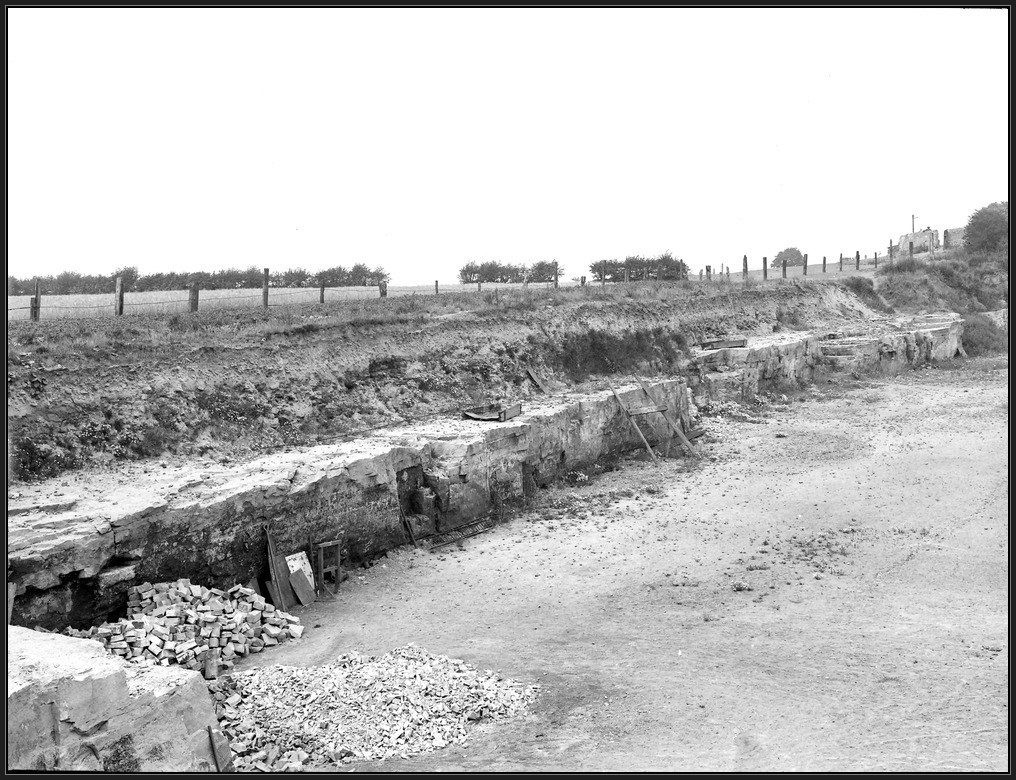
A type of sandstone laid down in a river delta 420 million years ago, it is one of the hardest and most durable rock types found anywhere in the Black Country. As a result, it was widely employed as a building stone in the local area – and can still be seen in numerous 19th century walls and churches.
Ruiton Quarry in Gornal Grit, July 1921. A pile of blocks for building stone is visible in the lower left. Working face roughly 3m high. British Geological Survey Photograph P201920.
